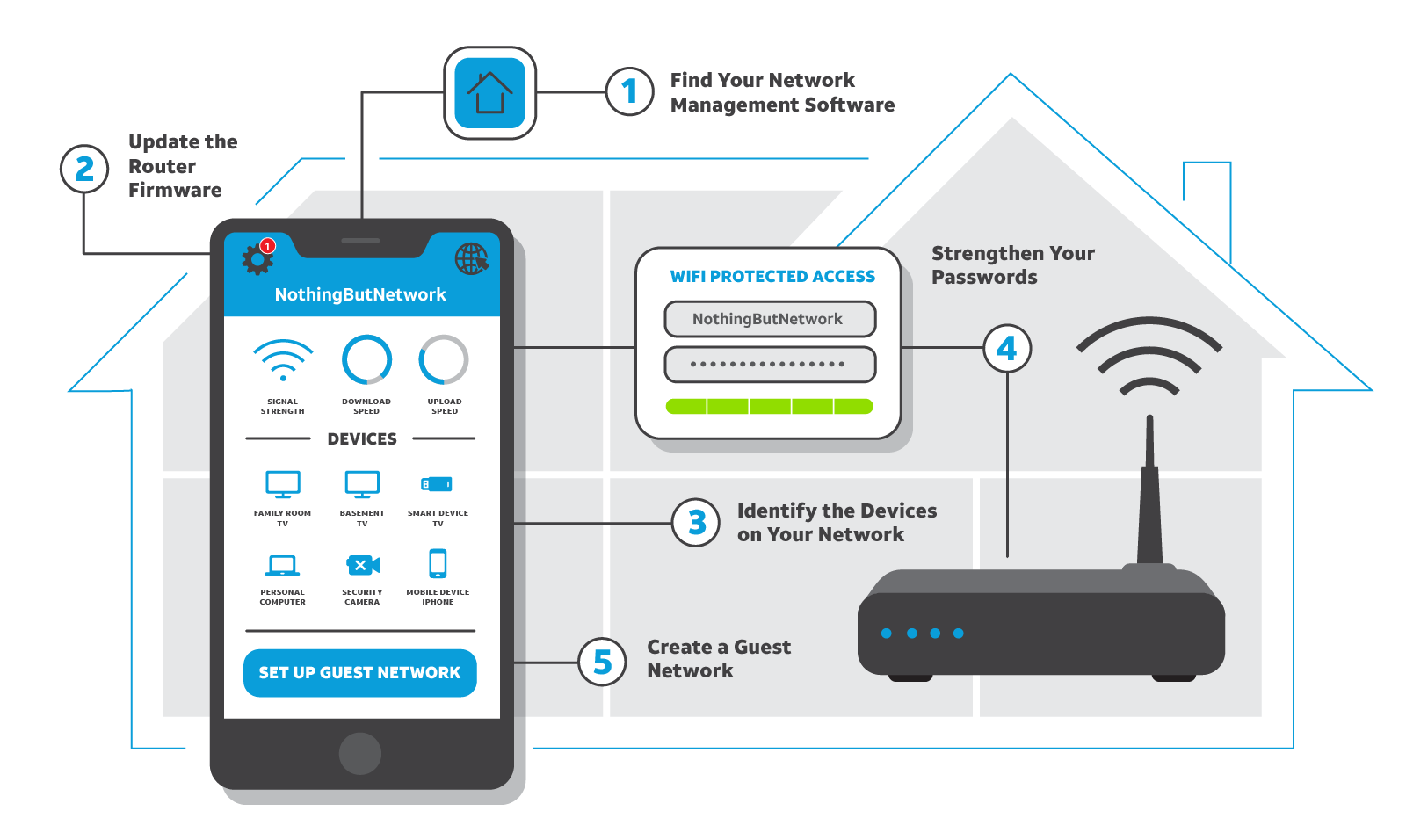It’s a pretty great time to be alive! Modern conveniences like smart lightbulbs can brighten a room at the sound of your voice, smart thermostats can warm up your home as you pull into the driveway.
But while convenient, connecting a smart device to your home creates a real risk to your privacy. So, if you want a home that’s not only smart, but also safe, you’ll need to make the smart move and beef up your security.
Let’s dive in!
In this article we’ll explore what smart devices (also known as Internet of Things or IoT) actually are, and how you can make the most of them while keeping your privacy safe.
What is an IoT device?

IoT stands for Internet of Things, and it generally means an Internet-connected thing that’s not a computer or a mobile device. Many people refer to it as a smart home device or IoT device.
You’ll find IoT devices all around you. Examples are smart lights, smart TVs, fitness trackers, robot vacuums — and even that refrigerator you considered buying because it showed you the weather.
But for these smart devices to work, they must be connected to your home Wi-Fi network. And that creates a security vulnerability.
Keep reading to see why adding IoT devices to your Wi-Fi is a real threat to your security and privacy, and how a guest network could help reduce your risk.
Why adding IoT devices to your shared Wi-Fi network is a threat
A hacker may not care about the shopping list stored in your smart refrigerator. But they’ll breach that IoT device to see what other devices are connected to the same network.
That’s precisely why smart devices are a risk to every other device on a network. They are typically easier to breach. So, hackers will use them as a gateway or “steppingstone” into more sensitive devices to access things like the banking app on your phone, all those passwords stored in your internet browser, or those tax records you have saved on your PC.
A hacker might target something like a pair of smart lights, which may be easier to get into than a PC. And then use that breach to jump over to a computer on the same Wi-Fi connection, which of course will be holding more sensitive data.
IoT devices tend to have less security overall
Many smart home devices don't receive regular security updates like a computer or a smartphone would. Their core business is building refrigerators, not cyber security. But, if your computer and smartphone are on separate networks and therefore isolated from your IoT devices, it makes it more difficult for hackers to easily jump across networks to get to them.
Next Step: Set up a guest network for IoT smart devices

Basic smart home security doesn't have to take up hours of your time. Setting up a guest network is a quick and easy way to separate your most sensitive devices like personal laptops, work computers, and cell phones from your smart home devices.
Activate the guest network included with your router
Just about all modern routers can set up a second Wi-Fi network, called a “guest network.” Most routers will have this capability. By putting all your IoT devices on a separate network you improve security through isolation. You cut that bridge that hackers use to go from an IoT device to another device on the same network, such as computer and mobile devices that hold sensitive information.
Follow these easy steps to set up a guest network:
- Activate the guest network included with your router. The guest network has its own password to log on to, and is listed as a separate Wi-Fi network when you are looking at your list of available networks.
- Rename that network and give it a difficult password. NOTE: Make sure the guest Wi-Fi password is different from your main Wi-Fi password.
- Connect all your IoT devices to the new guest network.
Please note, these steps should work in most situations. But if you need additional help, there are many helpful articles on how to create a guest Wi-Fi network that can be found online.